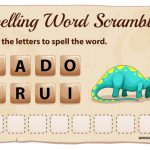“The Panchatantra moral stories are one of the most popular collections of animal-based fables. Originally written in Sanskrit, each of these fables has an associated moral. These stories are light, colourful, and appropriate, even for tiny tots, and provide valuable lessons that stay in their minds forever.”
– Mrunal, writer at FirstCry Parenting
The English versions of the Panchatantra stories have all the elements you might desire in a story— humour, fun, emotions, lessons learned from life, fascinating facts, mysterious characters, and more. As Indians, we have undoubtedly encountered a few stories from the Panchatantra.
Have you ever wondered why Panchatantra stories are important for kids?The Panchatantra is a vast compilation of stories that were first composed in Sanskrit. The etymology of Panchatantra consists of two words – Pancha and Tantra; Tantra denotes ideas or customs, and Pancha signifies five. Panchatantra, thus, refers to the five tenets or practices. That makes five volumes in the set. Let’s review some Panchatantra history before unveiling the titles of these books.
Every children’s Panchatantra story has a corresponding moral. Children learn these values via the stories’ plots and characters. Most likely, for this reason, educators and parents make sure that children are exposed to a minimum of some of these stories through the curriculum. The short stories of Panchatantra are worth reading.
The greatest Panchatantra stories with images may be found here. Children of all ages are amazed, educated, and entertained by these stories. You may read these wonderful Panchatantra moral stories to your child to instil moral principles and qualities. You can get the English PDF versions of the Panchatantra stories here.
The collection of Panchatantra short stories that we are offering you is as follows:
3 Panchatantra Short Stories Summary for Kids
- The Monkey and The Crocodile
- The Loyal Mongoose
- The Stork and The Crab
The monkey and the crocodile is one of the most fun Panchatantra stories for kids.
Once upon a time, on the banks of a river, lived a monkey who called a jamoon (berry) tree home in a jungle. There lived a crocodile and his spouse in the same woodland. The crocodile visited the riverbanks one day and took a nap beneath the tree. The generous monkey extended an offer of fruits to him. The crocodile enjoyed the fruits so much that he returned the next day for more. The crocodile and the monkey grew close as the days went by.
The crocodile’s wife received some fruits from the monkey one day. Although she enjoyed the fruits, she was envious of her husband for spending time with the monkey. “I wonder how sweet the monkey’s heart would be if the fruits were so juicy,” she said to her husband. Please bring me the monkey’s heart. The crocodile had no option but to murder his companion, even if he did not want to.
He said that his wife would want to meet the monkey and asked him to supper. The crocodile carried the contented monkey on its back as it was unable to swim. While chatting, the crocodile revealed the true purpose of taking the monkey home, even though he was pleased that he had misled the monkey. “You should have told me earlier I left my heart on the tree,” the astute monkey remarked. We have to return and retrieve it. He was taken back to the tree by the crocodile, who found him credible. The astute monkey, therefore, spared his life.
Moral Of The Story: “Choose your company wisely and always have presence of mind.”
The loyal mongoose is one of the important Panchatantra stories for kids.
A mongoose was the pet of a farming couple. One day, the farmer and his spouse had to leave the house quickly for work, so they trusted the mongoose to take good care of their child and left him there. A snake crept inside the house while they were gone and made its way to the baby’s cradle. To save the infant, the astute mongoose engaged the snake in combat and ultimately killed it.
The farmer’s wife was horrified to see bloodstains on the mongoose’s fangs and mouth when she got home. She became enraged and said, “You killed my baby!” She murdered the devoted mongoose out of sheer rage and lost all control. She observed the dead snake next to the living infant when she first arrived at her home. When she recognised what had happened, she felt remorse.
Moral Of The Story: “Think before you act.”
Once upon a time, a stork used to gather and consume fish from the nearby pond. But as he got older, it became harder for him to capture just one fish. He had an idea for a scheme to feed himself. He explained to the fish, frogs, and crabs that there wouldn’t be any fish in the pond since some guys were going to fill it up and plant crops there. He also expressed to them his sadness and his intention to miss each of them. The stork was requested to assist the fish, who were depressed. They will all be brought to a larger pond, the stork assured them. “As I am old, I can only take a few of you at one go,” he informed them, nevertheless. After bringing the fish to a rock, the stork would kill and devour them. He used to take some of them to the rock and eat them whenever he felt hungry.
A crab that was living in the pond desired to move to the larger pond as well. The stork decided to assist him and considered having a change of pace by eating the crab. “Where is the big pond?” the crab enquired of the stork as they travelled. With a giggle, the stork gestured to the fish-bones-filled rock. The crab immediately came up with a method to save himself after realising that the stork would kill him. He grabbed the stork by the neck and held on to it till it passed away.
Moral Of The Story: “Always have a presence of mind and act quickly when in danger.”
Now let us delve into the history of Panchatantra
Also Read – Folktale stories with moral lesson
History Time – A Concise History of Panchatantra
According to history, Panchatantra originated when a King named Amarasakti lived and wanted to instil in his three sons strong principles and effective leadership. His kids weren’t very bright to run the kingdom. Amarasakti, therefore, recruited the scholar Vishnu Sharma to educate them on the ins and outs of kingdom governance.
Vishnu deduced that these new pupils wouldn’t respond well to the traditional advice and methods. He made the decision to compile a collection of stories in five volumes, which he named Panchatantra, in order to impart moral principles and effective leadership.
The five volumes that makeup Panchatantra are named as follows:
- Making Friends: Mitra-labha. It has a number of narratives on making friends.
- Friends Were Lost: Mitra-bheda. It contains a number of tales about friends falling apart.
- Behaving Carelessly: Aparīkṣitakārakaṃ. It contains Panchatantra stories on discipline and on making snap decisions or acting without considering the repercussions of one’s actions
- Loss of Gains: Labdhapraṇāśam. It contains a number of tales about losing what you have accomplished.
- Owls and Crows: Kākolūkīyam. It contains a number of tales about both peace and conflict.
Numerous languages, including Hindi, English, Persian, and Arabic, have translations of the Panchatantra stories for children. The Panchatantra moral fables have been translated into basic vernacular languages by several writers and translators, making them understandable to the public.
Parents never stop worrying about their children’s education. However, Panchatantra stories on discipline can help parents communicate what they mean effectively to children. Providing the children with educational materials that also keep them entertained and involved is essential. English-language Panchatantra short stories are among the best tools for encouraging your child to improve their language abilities.
These Panchatantra stories may be told to kids to help them understand moral principles. Children can learn about the values of discipline, friendship, strength, intellect, and other qualities from Panchatantra’s stories, for instance, and how these values affect their day-to-day lives.
Readers of all ages like children’s stories. Spending quality time and building a bond with your child may be achieved by reciting these illustrated Panchatantra stories. A significant portion of the Panchatantra tales, which are taught or read aloud to children throughout their early years, are in English.
What an Author ! The Great Vishnu Sharma
Hindu scholar and philosopher Vishnu Sharma lived in ancient India most likely between 100 BCE and 300 CE. Despite the paucity of information available about his life, he is recognised as the Panchatantra’s original composer. A compilation of folktales, parables, and animal stories with universal lessons is called the Panchatantra. Vishnu Sharma captivated the princes by weaving fantastical tales with animal heroes that subtly taught valuable truths about life. By cloaking wisdom in entertaining tales, the morals became more interesting and memorable. Vishnu Sharma was clearly a highly insightful sage and gifted storyteller. His masterful blend of amusement and wisdom in the Panchatantra is what allowed it to endure across languages and cultures to become one of the most widely adapted secular books in human history.
6 Interesting Types of Indian Stories for Kids
The Panchatantra is a foundational pillar of children’s literature in India. Here are summaries of some other enduringly popular Indian story collections that blend education with entertainment:
- The Jataka Tales regale readers with Buddha’s over 550 past lives, each exemplifying virtues like compassion and sacrifice. Inscribed on ancient temple walls, these fables made ideals memorable through imaginative stories that appeal to young and old.
- Showcasing witty folk tales, Akbar and Birbal brings alive the intrigue of Mughal court life. Birbal, as Akbar’s advisor, elicits humour and wisdom while resolving challenging puzzles using clever tricks and intellect.
- Somadeva’s 11th century Kathasaritsagara unfurls awe-inspiring legends and fairy tales through lyrical Sanskrit. Its 18,000 stories create an imaginative ocean brimming with romance, adventure, magic, and mythical beings that capture the imagination.
- Composed in eloquent Sanskrit, Hitopadesha condenses practical wisdom into animal fables for rulers. Through simple allegorical tales on ethics and statecraft it makes impactful lessons accessible and engaging.
- Brave King Vikramaditya shines in Vikram and Vetal, confronting dangerous ghosts and riddles that test his courage. With presence of mind and intelligence, he resolves supernatural perils in these suspenseful narratives that have entertained generations.
- The influence of Panchatantra is evident in these collections that continue spreading its distinctive blend of entertainment and wisdom through creative stories. They showcase literary brilliance that masterfully imparts moral lessons in captivating ways, inspiring future storytelling traditions.
3 Key FAQs for You
Q1: What age group are Panchatantra stories suitable for?
A: The Panchatantra stories appeal foremost to children between ages 5 to 10 years old. The simple language, playful animal characters and clear morals make the stories highly engaging and easy to comprehend for young readers across cultures. Adults may also enjoy the enduring wisdom presented through the tales.
Q2: How many stories are there in the Panchatantra?
A: There are over 200 fascinating animal fables, parables and tales spread across the 5 volumes of the Panchatantra. The most iconic stories feature animal protagonists like the crocodile, monkey, lion, mouse, snake and others. The interweaving stories-within-stories format further multiplies the number of tales.
Q3: What are some key lessons taught in Panchatantra?
A: Core themes and lessons found in Panchatantra stories include: the virtues of wisdom, prudence, foresight, honesty, friendship and gratitude; the perils of ignorance, arrogance and recklessness; practical knowledge on governance, statecraft, relationships and diplomacy. The blend of entertainment and wisdom makes these lessons easy to absorb, remember and apply.
Conclusion
Panchatantra stories are crucial for kids to learn about values, humour, fun, and emotions. In this article, we have covered the importance of Panchatantra stories, three short summaries of Panchatantra stories, and the etymology of Panchatantra stories. We have provided details on the history of Panchatantra about the author Vishnu Sharma and six different types of Indian stories for kids.
Which Panchatantra story will you narrate to your child today?
For informative and accurate articles on all things related to your new born-toddler’s development, growth, health and nutrition, follow EuroKids Blogs and do check out our nationally recognized preschools – EuroKids for the first step in your kid’s educational journey!















